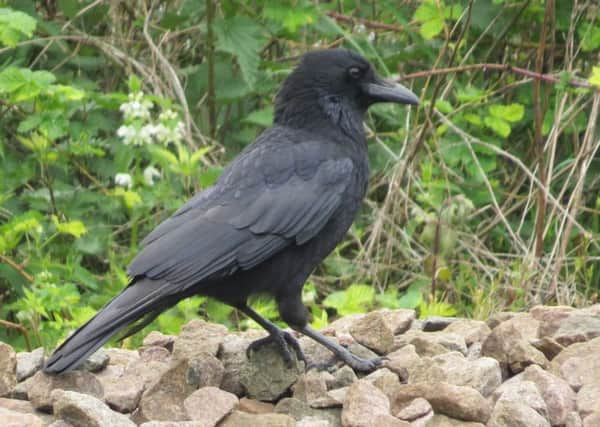Species with an unshakeable reputation for grave tidings


If you ask Yorkshire gamekeepers which is the smarter, though, they would probably answer without hesitation that it’s the carrion crow.
Once known as flesh crows across the three historic Ridings, these uniformly black birds learned to work out that garden canes placed as markers beside red grouse nests on heather moorland were an easy indicator of a ready meal.
Advertisement
Hide AdAdvertisement
Hide AdFew, if any, people love carrion crows, and there certainly seems to be more superstitions attached to them than other species.
In Saxon times it was said that if a carrion crow appeared on your left it was a portent of disaster. In Wales, if you see one bird it is deemed to be unlucky, but two together mean good fortune.
In Lancashire they are known as “doom crows”. Children are taught to fear them by the wicked witch in Snow White having one at her side as she concocts her poisonous brew.
Some years back, Maria Glot, who conducts guided walking tours around the UNESCO World Heritage Site of Saltaire, told me the story of how millworkers began to see an old crow around the village immediately after the death of Sir Titus Salt in 1876, and became convinced that their former employer had come back to guard the village.
Advertisement
Hide AdAdvertisement
Hide Ad“It’s uncanny,” she said, “but to this day there’s one that has a habit of appearing and calling to me whenever I’m showing parties round.”
Out in the countryside, though, carrion crows are viewed with deep hostility because of their reputation for preying on new-born lambs, pecking their eyes out before they can escape.
They are held to be the worst offenders as far as gamekeepers are concerned, and it has been found that wherever carrion crows are caught with Larsen traps the population of ground-nesting waders like curlews, lapwings and golden plovers shoots up.
When I reported this story for The Yorkshire Post in 2010 a sheep farmer near Bingley wrote a letter querying why they were named “carrion” crows, since carrion - the flesh of dead animals - did not appear to account for the main part of their diet. Or as the farmer put it: “More often than not it kills its food before eating it, rather than the woolly idea that they only eat roadkill and animals that have died of natural causes.”
Advertisement
Hide AdAdvertisement
Hide AdThe farmer blamed carrion crows for wiping out the local population of hares, explaining: “I have watched in horror as they pick the leverets up, fly to a height and then drop the poor creatures to the ground. Once dead, they are quickly consumed.”
Most gruesome of all, carrion crows are known as battlefield crows, and through history large flocks have been recorded feasting on the dead and dying.